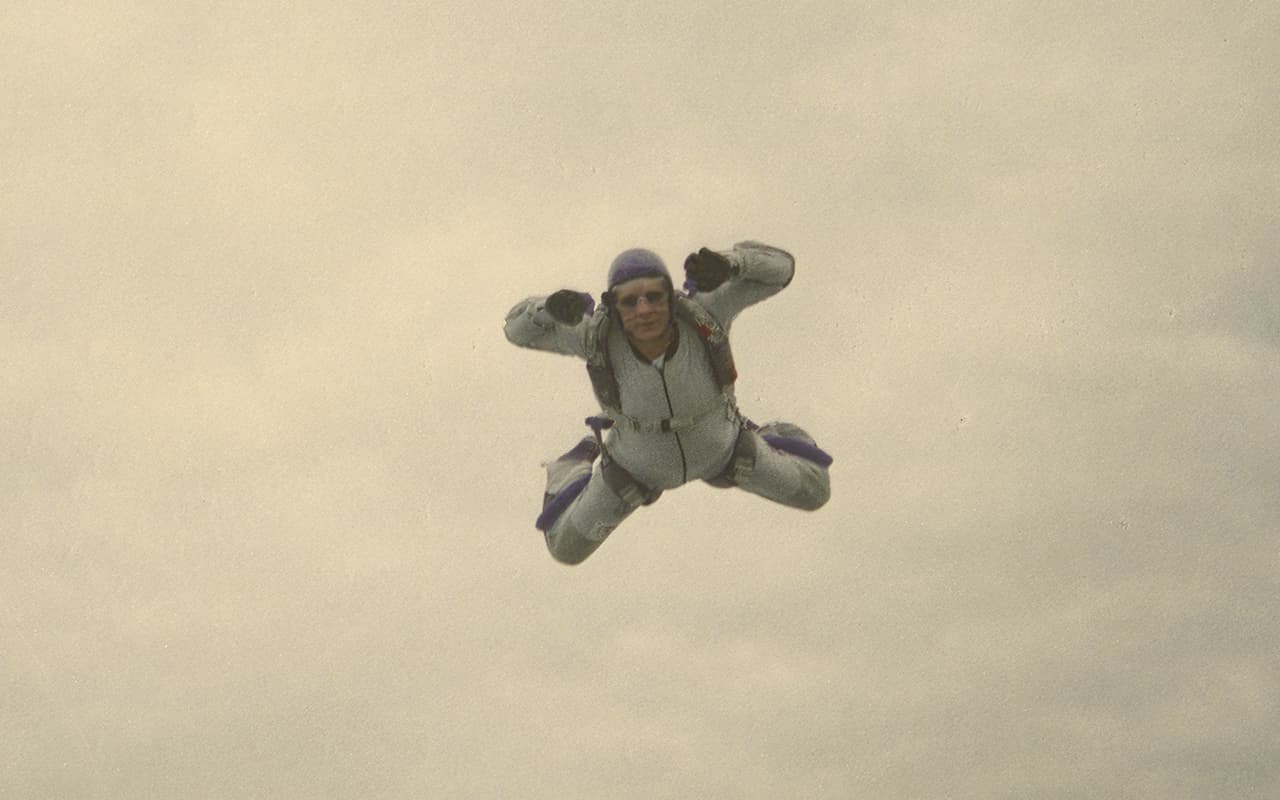Spend an hour at the dropzone and you’re likely to hear the term “freefly”. You might see a group of freeflyers looking cool in their tight neon jumpsuits standing in the landing zone, holding hands and spinning around – almost as if they were dancing in preparation for their next skydive. What they do is called a “dirt dive” (other skydiving disciplines do this as well), and it means they go through the plan for their jump so everyone is on the same page. If you’re new to the scene, you’re probably wondering: what is freefall?
There are two main stages during a skydive: the freefall part and the parachute part. Within these stages there are several different skydiving disciplines. Some of the most popular freefall disciplines are formation skydiving, freefly, angled flight, and wingsuit (also known as wingsuit):
Known as “belly flying”, wingsuit jumping is usually the first way people learn to skydive. Not only is arching your back and falling on your stomach to the ground the most natural way to fall, it’s also a basic skill you start developing from your very first tandem.
Freefly skydiving is a type of fall when you are in an upright position, usually with your head up or down.
Angled flight is a forward movement where jumpers position their bodies so that they are at an angle, moving quickly and horizontally in the air.
Wing Suit flying (also known as wingsuiting) also refers to forward motion and involves wearing a suit that has material between your legs and from your arms to your hips (known to non-parachutists as a squirrel suit).
Freefly and bellyflight are both types of skydiving where you fall straight down, as opposed to moving through the sky, except that freeflight is much faster.
While the free fall speed for belly flying ranges from 120 mph to 140 mph, the speed at which you fall during free flight ranges from 150 mph to 170 mph. The reason that free flight is much faster than belly-flying is that the mass of the person remains the same, but the surface area presented during the fall is much smaller vertically than horizontally. As the speed increases, small movements have a bigger effect and everything happens much faster.
Free-flying can be free and improvised without a plan, which means friends fall vertically toward each other, flip, turn, and dock (touching or holding the other person), or whatever they decide to do during free-fall. Free-float jumps can also be organized, meaning that the jumpers plan in advance what they want to do, talk about it, physically go through the plan on the ground, and then try to execute the plan in the sky. There is also competitive freeflight, which is strictly planned, practiced, and evaluated.
To start freeflighting, you must be a licensed skydiver (not a tandem student) and have equipment that is appropriate for the orientation and speed that accompanies freeflighting, including a suitable parachute canister and jumpsuit.
Freeflight is generally not for beginners and you should have at least an intermediate level of understanding of body movements, abdominal skills, and skydiving safety before adding additional speed and more erratic orientation. When learning to freefly, it usually feels like you are falling straight down, but you are actually moving horizontally across the sky. Without realizing it, this can be dangerous as you could potentially move under another group of skydivers. The way you move relative to others in the sky is critical, and this is one of the reasons why you should jump with an experienced freeflyer (preferably a coach) when learning to freefly. Wind tunnel training, or indoor skydiving, is a great way to learn free flight quickly and safely without having to worry about anything but learning to fly (and it’s super fun).
